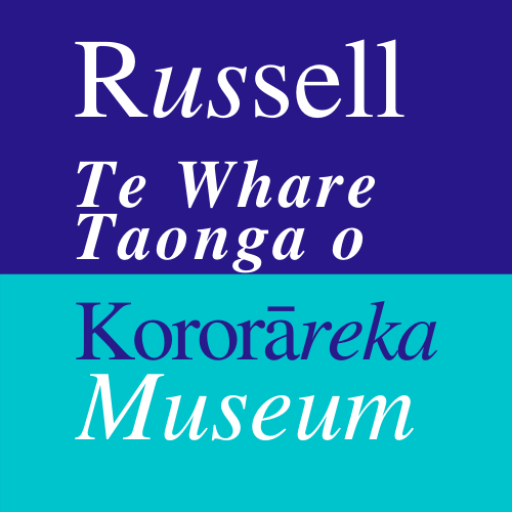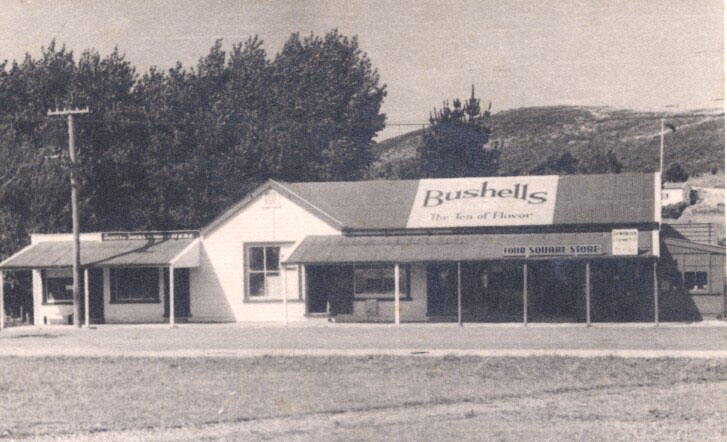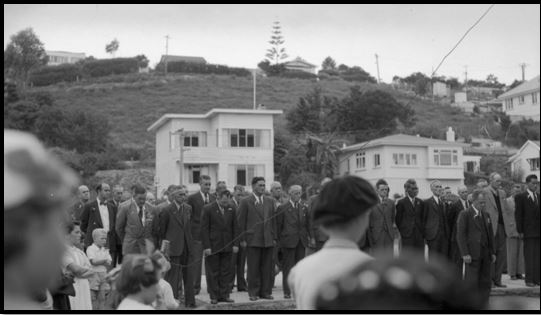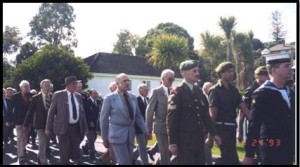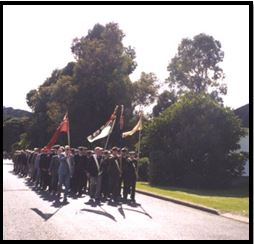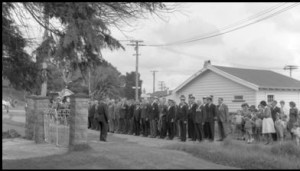Most of us are familiar with our iconically historic buildings – Pompallier, Christ Church, and the old Custom House – but we still have many other less historic buildings and sites that contribute significantly to our sense of history. Some of them are NZHPT registered, like the Baker family home and picket fence. Others are not, like the Moore cottage and Cavalli just around the corner. Did you know that Russell Primary school is registered as a Category II historic building? Or that the pomegranate tree, Punica granatum, on Baker St is listed as a notable tree? We have three separate heritage precincts with planning rules that differ from the rest of the village. But do we still care? Do we agree with and support the information set out in the council’s “nonstatutory document”, Russell Design Guidlelines? Or are they perceived as just another attempt to regulate us and make our lives more difficult? Signage for instance – “Visual impact should be gained by the use of interesting and finely crafted signs”. Do we believe this? Or are we succumbing to the apparent worldwide trend towards bigger, brighter and bolder? Check it out – google FNDC Russell Design Guidelines – and next time you walk your dog or go into the much photographed “General Store”, a FNDC scheduled building on The Strand for a newspaper, really look around. Take note. Are we being true to our heritage? Or are we merely capitalising on it and slowly destroying it?
Tag: heritage
-
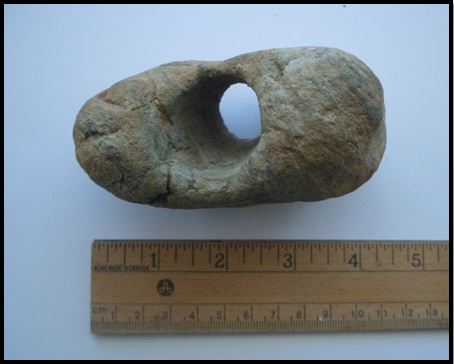
Thanks, Lusi – #160
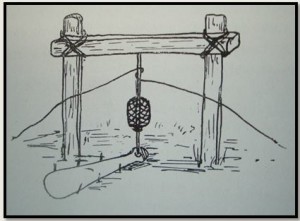
 The swells and waves generated by Cyclone Lusi moved the shingle on our Russell beach around and reshaped the sand banks at Long Beach. They also tossed up some surprises. This curiously shaped rock is one of them, found at the south end of Paihia beach and handed in to Russell Museum soon after the storm. The finders are curious. So are we. The rock is pierced by three remarkably uniform holes. The largest one you can see in the image. There are two more, on the other side, both blind holes of about 5mm diameter, one a centimetre deep, the other extending almost 3 cm into the rock. Maybe these are rock borer burrows. The large hole is different. Our first guess is that the rock is an early net weight – the holes being made by a drill something like those drawn in the other images. Evidence suggests that Māori would have added sand and water to enhance the process. Imagine the time required to drill such a hole. By hand. In rock. And then consider how many of these – if that is what it is – would have been needed in a net 9 metres deep and up to 900 metres long. That was Joseph Banks’ estimate of the dimensions of a net he was shown, here in the Bay of Islands, in 1769. Please, if you’d like to see this object and are able to help us solve this small mystery, come and visit. We are open every day, 10am to 4 pm.
The swells and waves generated by Cyclone Lusi moved the shingle on our Russell beach around and reshaped the sand banks at Long Beach. They also tossed up some surprises. This curiously shaped rock is one of them, found at the south end of Paihia beach and handed in to Russell Museum soon after the storm. The finders are curious. So are we. The rock is pierced by three remarkably uniform holes. The largest one you can see in the image. There are two more, on the other side, both blind holes of about 5mm diameter, one a centimetre deep, the other extending almost 3 cm into the rock. Maybe these are rock borer burrows. The large hole is different. Our first guess is that the rock is an early net weight – the holes being made by a drill something like those drawn in the other images. Evidence suggests that Māori would have added sand and water to enhance the process. Imagine the time required to drill such a hole. By hand. In rock. And then consider how many of these – if that is what it is – would have been needed in a net 9 metres deep and up to 900 metres long. That was Joseph Banks’ estimate of the dimensions of a net he was shown, here in the Bay of Islands, in 1769. Please, if you’d like to see this object and are able to help us solve this small mystery, come and visit. We are open every day, 10am to 4 pm.Source. Elsdon Best (1912) Stone Implements of the Maori. Dominion Museum Bulletin No 4. Wellington.
-

Another Anzac Commemoration And A Different Sort Of Loss – #162
These photos are from sometime in the 1950s, before the “back road” reached Te Rawhiti. Then, a favoured way to get to Rawhiti was by boat. The service was probably much the same as now, ditto the thoughts and memories of those in attendance. What was different though, was the stroll up from the beach to the marae grounds. See the nice gentle slope in the picture? It’s gone. Different too would have been the sense of seclusion for this and many other significant and meaningful occasions. Privacy disappeared when the road crossed in front of the marae. Could it have followed a different route? Whose decision was it? These photos and an answer to those and many other questions can be found on the walls of Russell Museum’s King gallery. Our latest exhibition, ” Still Unsettled – Ngā Hapū o Te Rawhiti” explores the stories behind the journey of the hapū to their recent Waitangi Tribunal hearings. Come and visit. And prepare to be unsettled.
-

Emergency Power & People Power – #163
Power cuts. They could be worse. Does anyone remember 1973 when the whole peninsula was briefly powerless, courtesy of a visiting cruise liner? The photo shows the Chapel St generator that arrived the very same day. But that wasn’t the end of it. The NZ Herald, Auckland Star, Northern Advocate and Northern News followed progress. Here are some excerpts: Feb 15th 1973, Power cable severed. Russell Peninsula without power after the liner Monterey damaged the cable at Opua. Portable generators restore power to Russell. Photos: Duke of Marlborough Hotel dining by barbecue (Mr von Landkammer and waitresses), Daniel McInnes serving petrol with a hand pump at the Service Station; March Temporary overhead cable cut by M.V. Port Caroline (the largest refrigerated ship in the world) when departing Opua. Newly repaired submarine cable failed; July, Mr J D Haigh, Engineer Manager BOIEPB, warns that cable will have to be changed from submarine to aerial, to prevent future damage from shipping. Meeting called by Russell Businessmen’s Assoc. to discuss the Power Board’s efforts to provide a permanent and adequate supply ; August , BOIEPB proposes aerial cable across the Waikare Inlet from Pine Island to Aucks Road. Aerial cable approved by Northland Harbour Board, BOICC and government departments; September, Letter to the Editor re the proposed aerial cable, Opua to Okiato; April 1974, New submarine cable between Opua and Okiato in operation next week; June, Protests against aerial power cable including petition from Okiato residents and letters to MPs, organised by Lang Cavers of Okiato; July, One of 3 submarine cables fails; August, Aerial cable abandoned in favour of submarine cable between Day’s Point and de Vantier property at Okiato; May 1975 Submarine cable installed across the Waikare Inlet with the help of the ferry “Opua”. “The power board decided to use a submarine cable across to the Russell Peninsula after receiving strong opposition to its original proposal to use an overhead crossing.”
-

Matariki Stamps – #164
NZ Post’s Matariki stamp issue this year tells the Māori creation narrative through the work of six New Zealand artists, in six very different ways. Two of these artists we claim as our own, here in Russell – Cliff Whiting and Pauline Kahurangi Yearbury. This Pauline Yearbury image features on the $2.50 stamp and is also in her 1976 book, The Children of Rangi and Papa: The Maori Story of Creation. NZ Post describes the image: “In this frame, Papa is clutching Rangi in a supportive embrace with the umbilical cord of her last child still present. This work by Yearbury is indicative of her visceral style and her clever use of line to project movement in her visual exploration of Māori narratives. Yearbury was lost to the Māori art world well before her contribution had been fully recognised“. Pauline Kahurangi Yearbury was not only an artist. She was also a poet. She left us two interpretations of the great creation narrative, of Ranginui, the Great-Heaven-which-stands-above, and Papa-tu-a-nuku, the Great-Earth-which-lies-below. One is in words. One is in images. They lie together in one book.
Source: http://stamps.nzpost.co.nz/new-zealand/2014/matariki-paptuanuku-and-ranginui#issue-section-500
-
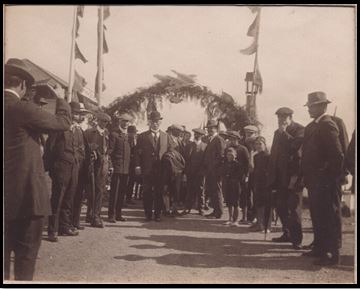
Electioneering 100 Years Ago? – #165
Or was he, like many others before and after, hoping for some peace and quiet, some respite from his daily affairs, here in Kororāreka? In April 1914, Prime Minister Mr. William Massey came to Russell. He’d been in the top job for two years by then, for two eventful years. According to one biographer, the government “led by Massey was marked by uncertainty, unscrupulous political manoeuvring, nasty intrigue, accusations of bribery, and bitter recriminations in which Massey himself indulged.” Massey’s leadership was tested very early in his first term. “The incoming Reform government was immediately faced with two of the major industrial disputes in New Zealand’s history: the 1912 Waihi miners’ strike and the 1913 waterfront and general strikes, which split the community into two irreconcilable camps. Massey… adopted a partisan position; the use of special constables, who became known as ‘Massey’s Cossacks’, earned Massey the undying hatred of many urban workers, an enmity passed on to their children. However, more conservative voters, especially in the farming community, saw Massey’s stand as firm and decisive, arguing that Massey simply took the ‘Red Feds’ at their word and met their revolutionary rhetoric and intimidatory tactics with superior force.” Did Prime Minister Massey know, as he strolled around Russell with his coat over his arm, that there would soon be more pressing business than the upcoming December 1914 general election? In August the First World War broke out. A year later Massey was still Prime Minister, but in coalition with the Liberals and Sir Joseph Ward. Apparently “Massey and Ward detested each other on personal, political and religious grounds and a decision to legislate only if there was unanimity in the coalition cabinet made the period of National government very frustrating for all involved”.
Source: http://www.teara.govt.nz/en/biographies/2m39/massey-william-ferguson
-

WWI Memorials – #167
In support of the Laurence Aberhart photographic exhibition now on in the Marie King Gallery, Russell Museum staff have been into the storeroom. There we found a variety of unexpected objects which are now on display too. It was sobering to realise that even in the midst of war, individual soldiers found somewhere to stash small reminders, souvenirs of those momentous days, and to bring them home. For us, a century later, they are also reminders of those soldiers. Some of these mementoes came home with Russell men Horace Williams and Len Woods. Shown here are German bank notes, Turkish shells, a cut throat razor found in a trench at Gallipoli, and a piece of fabric covered wood which was once part of a German aircraft. Mr Williams saw this aeroplane attack an Allied Observation Balloon. It was one of the first aircraft that NZ troops ever saw. The balloon’s crew returned the attack and each destroyed the other. The aeroplane brought down the balloon, killing all the crew, and then crashed, killing its pilot. It’s a very different, tangible type of memorial to anonymous servicemen from both sides of the conflict.
-

The Story Behind The Face – #168
She gazes quietly in her corner. There are only a few clues as to her origin or history and little is known about how she ended up in Russell Museum. It is thought that she was part of the figurehead from the barque Lizzie Bell, 1070 tons, which set out from Wellington bound for Newcastle with 18 crew. The weather was fine but cold, with a slight haze. On the night of July 24th 1901, the ship struck a rock on Waimate Reef, 2.4km south of Oeo River, Taranaki, and 2 crew were thrown overboard and found dead. The ship was wrecked. The rest of the crew abandoned ship and during the night were capsized more than once, with the loss of another 6 crewmen. The next morning the survivors made their way to a Capt Good’s property to seek help, but not without suffering another 4 deaths.
Wooden figures like this one in the bow of the ship were traditionally used for luck and were designed to embody the spirit of their ships. Despite being viewed as unlucky aboard a ship, women were perversely believed to be the best navigators. Superstition amongst sailors said that the female figurehead should have eyes to find a way through the seas when lost, whilst her bare breast would shame a stormy sea into calm.
This figurehead is on loan from the family of Peter Williams, the famous launchman of Avalon fame who fished with Zane Grey when he visited NZ in the 1920s. Grey praised Peter’s ability as a boatman, calling him “The best and coolest and strongest man who ever stood by my side with a gaff.” But how did he come by the figurehead of the Lizzie Bell? Quite a story, complete with tragedy, superstition and mystery, behind the face.
Sources. New Zealand Shipwrecks 1795-1975. Papers Past. http://www.plimsoll.org/SeaPeople/womenandthesea/theearlydaysofwomenatsea/
-

Look She’s Painting – #169
This wee building was once Frank and Hope Miller’s grocery store. In 1967 it became an art gallery. Operated by Pauline and Jim Yearbury until 1976, it was on the corner of York and Chapel Streets, where the Duke Tavern car park is now. A year later Pauline painted these two faces, peeping in at her as she worked, through one of the split pane windows. In oil on board, it joins art works by thirteen other local artists in Russell Museum’s newest exhibition – Made in Russell.
